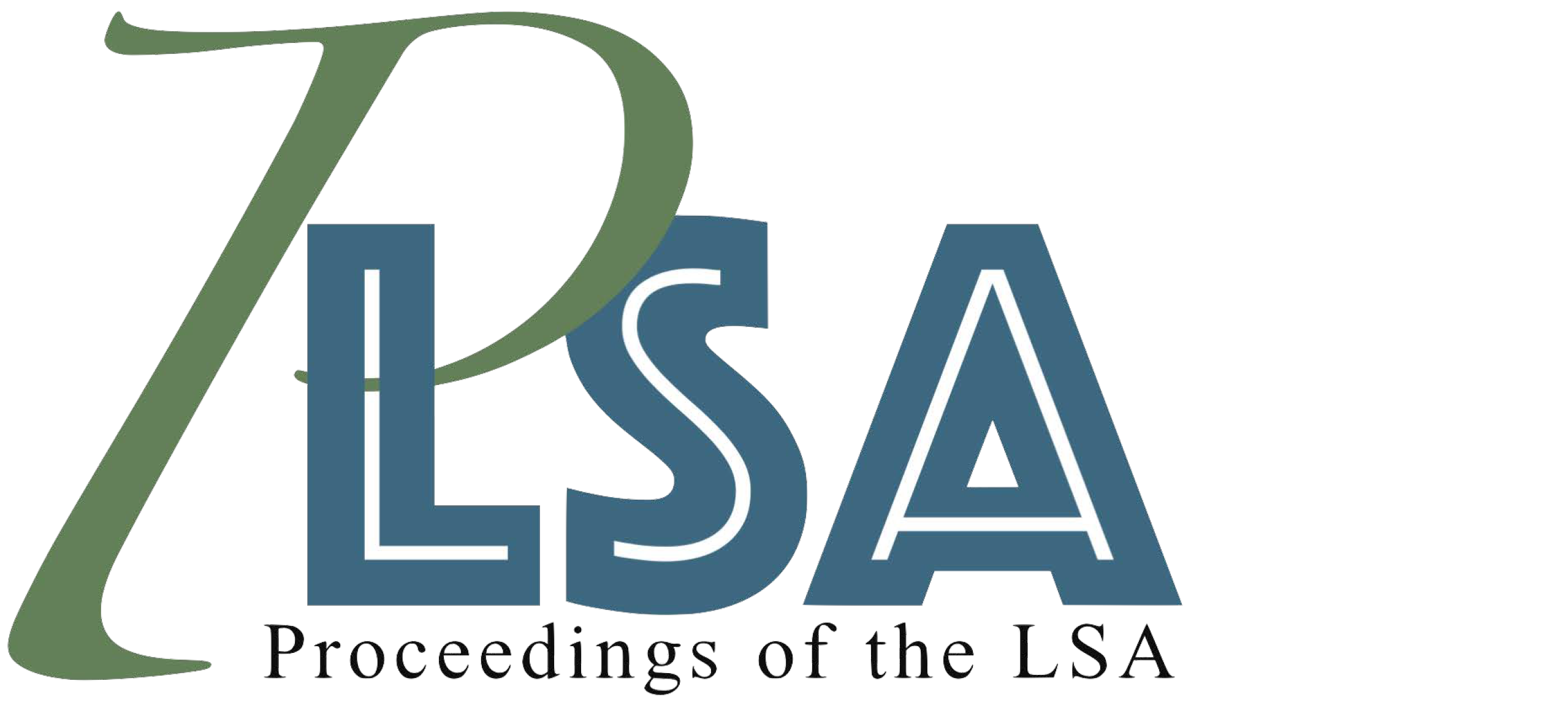Lexical ambiguity and acoustic distance in discrimination
DOI:
https://doi.org/10.3765/plsa.v5i1.4719Keywords:
lexical ambiguity, acoustic distance, auditory perceptionAbstract
This work presents a perceptual study on how acoustic details and knowledge of the lexicon influence discrimination decisions. English-speaking listeners were less likely to identify phonologically matching items as the same when they differed in vowel duration, but differences in mean F0 did not have an effect. Although both are components of English contrasts, the results only provide evidence for attention to vowel duration as a potentially contrastive cue. Lexical ambiguity was a predictor of response time. Pairs with matching duration were identified more quickly than pairs with distinct duration, but only among lexically ambiguous items, indicating that lexical ambiguity mediates attention to acoustic detail. Lexical ambiguity also interacted with neighborhood density: Among lexically unambiguous words, the proportion of 'same' responses decreased with neighborhood density, but there was no effect among lexically ambiguous words. This interaction suggests that evaluating phonological similarity depends more on lexical information when the items are lexically unambiguous.Downloads
Published
2020-03-23
Issue
Section
Articles
License
Published by the LSA with permission of the author(s) under a CC BY 4.0 license.
How to Cite
Sanker, Chelsea. 2020. “Lexical Ambiguity and Acoustic Distance in Discrimination”. Proceedings of the Linguistic Society of America 5 (1): 431–445. https://doi.org/10.3765/plsa.v5i1.4719.
